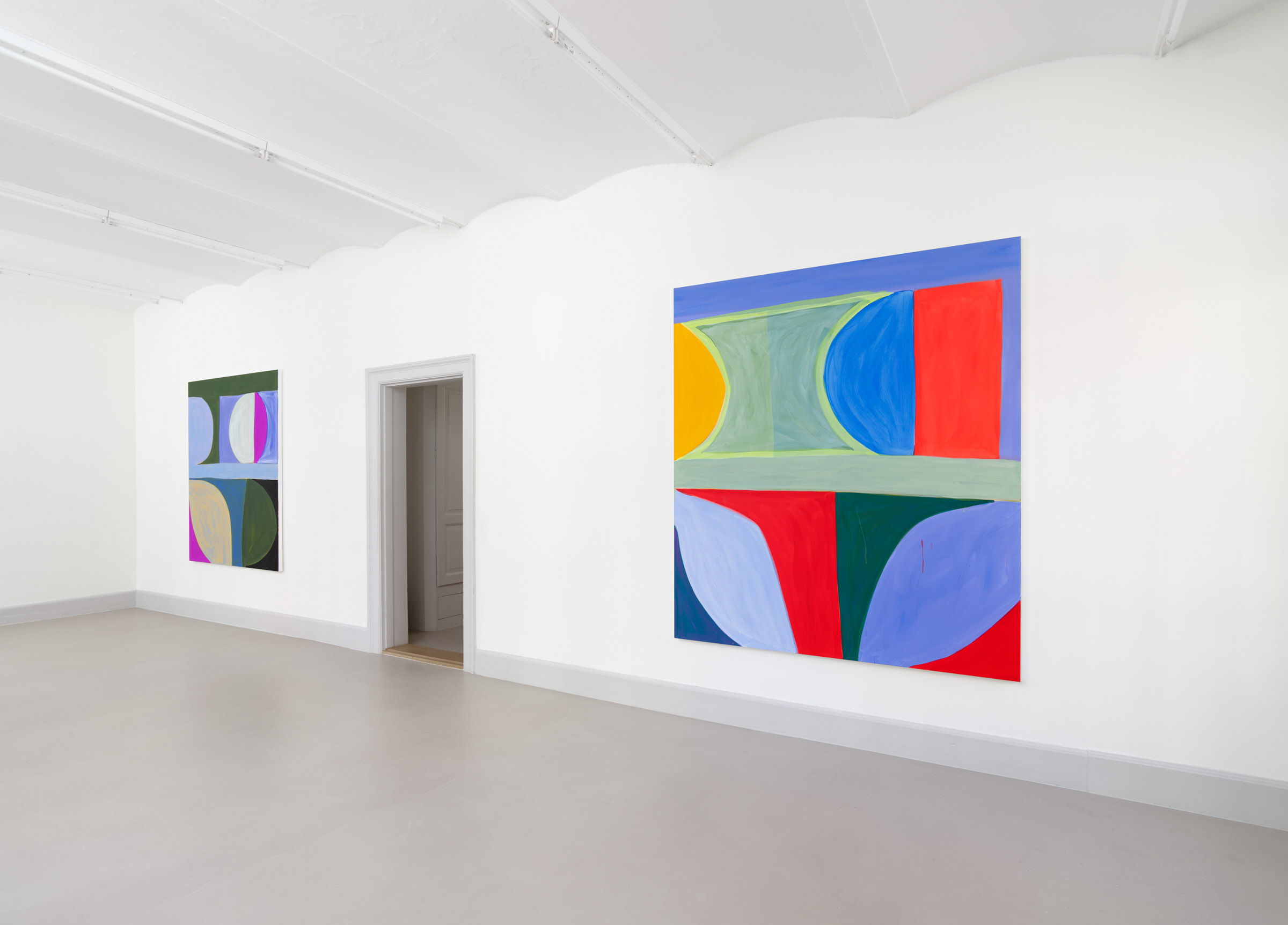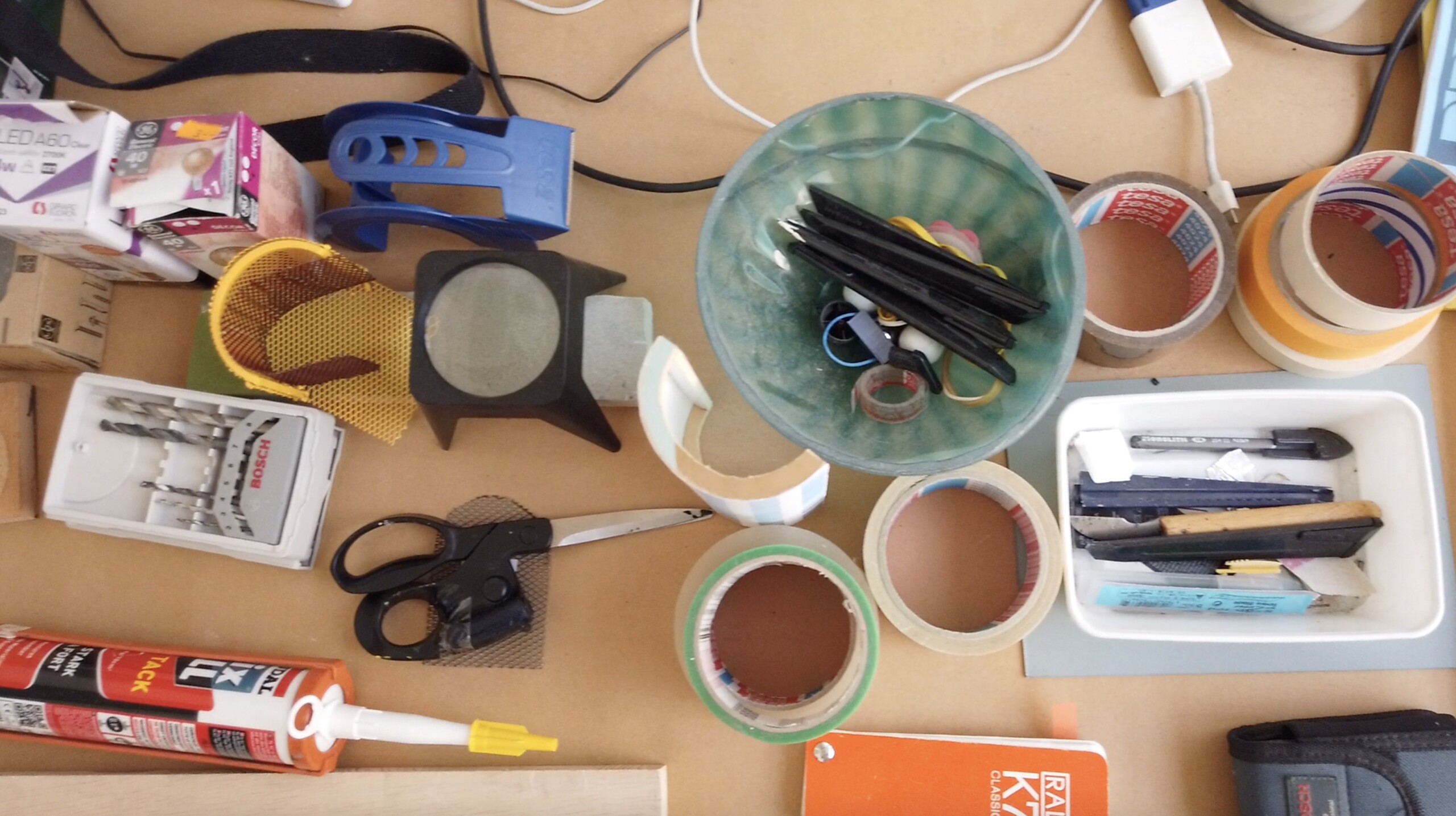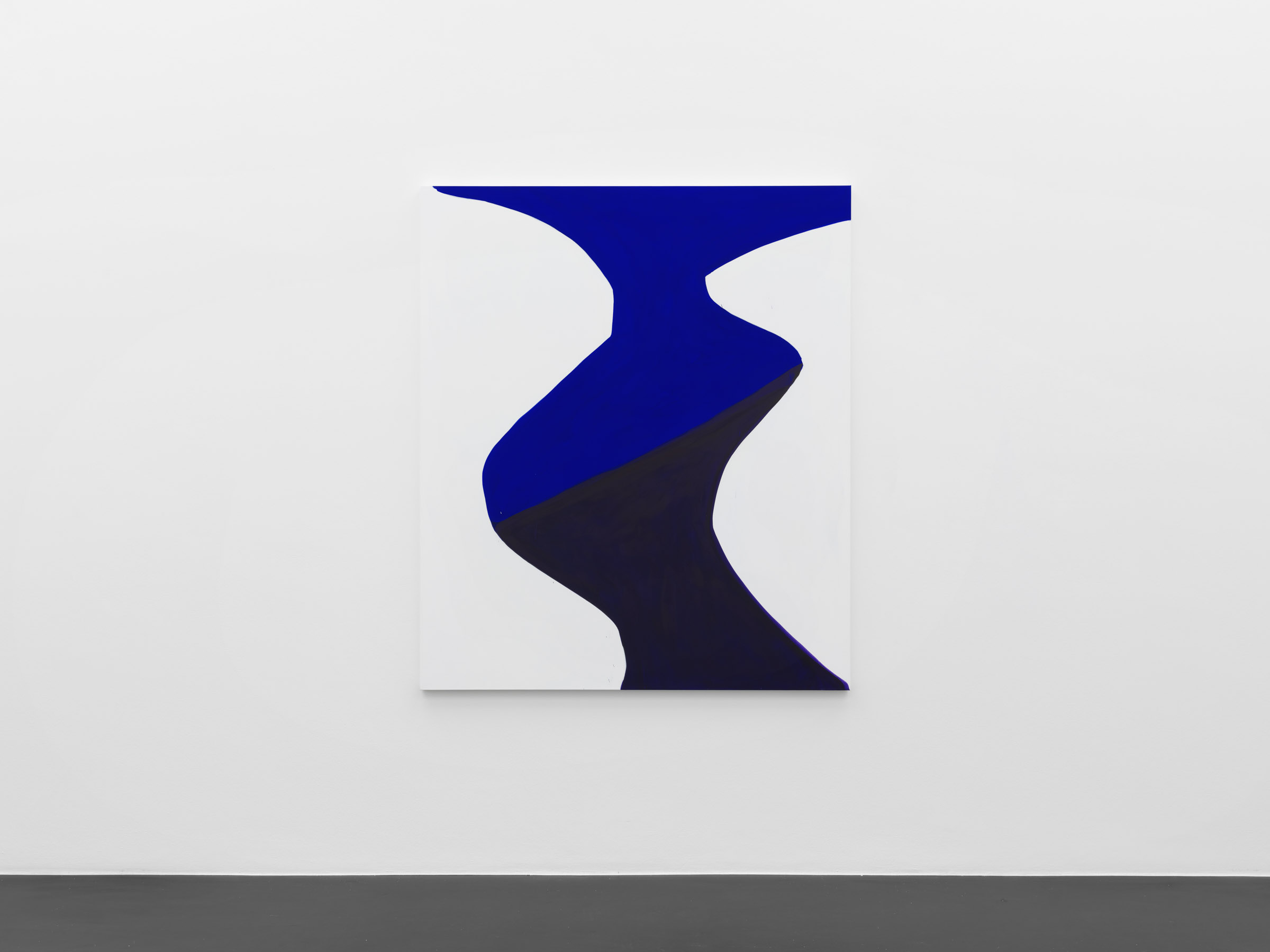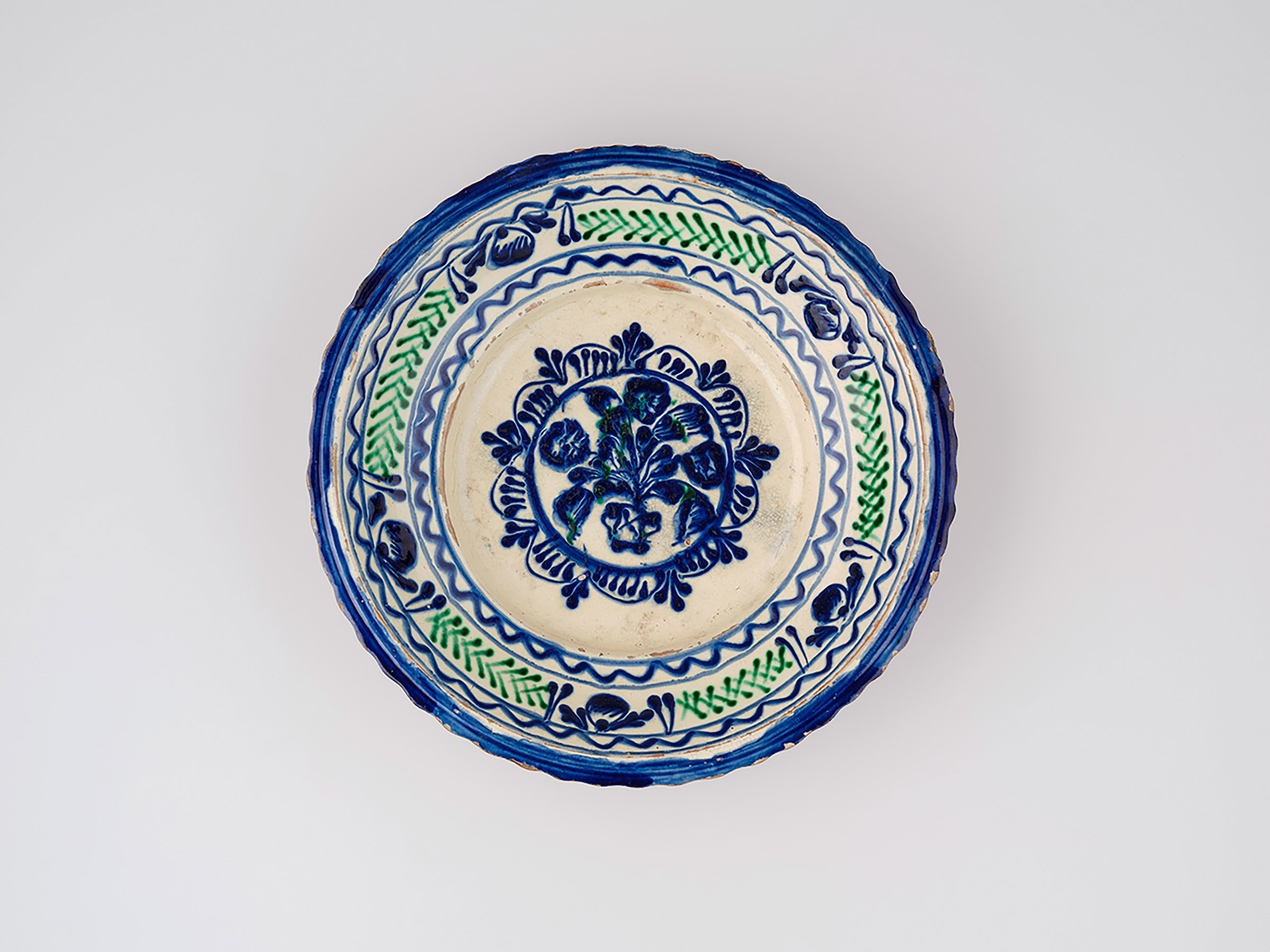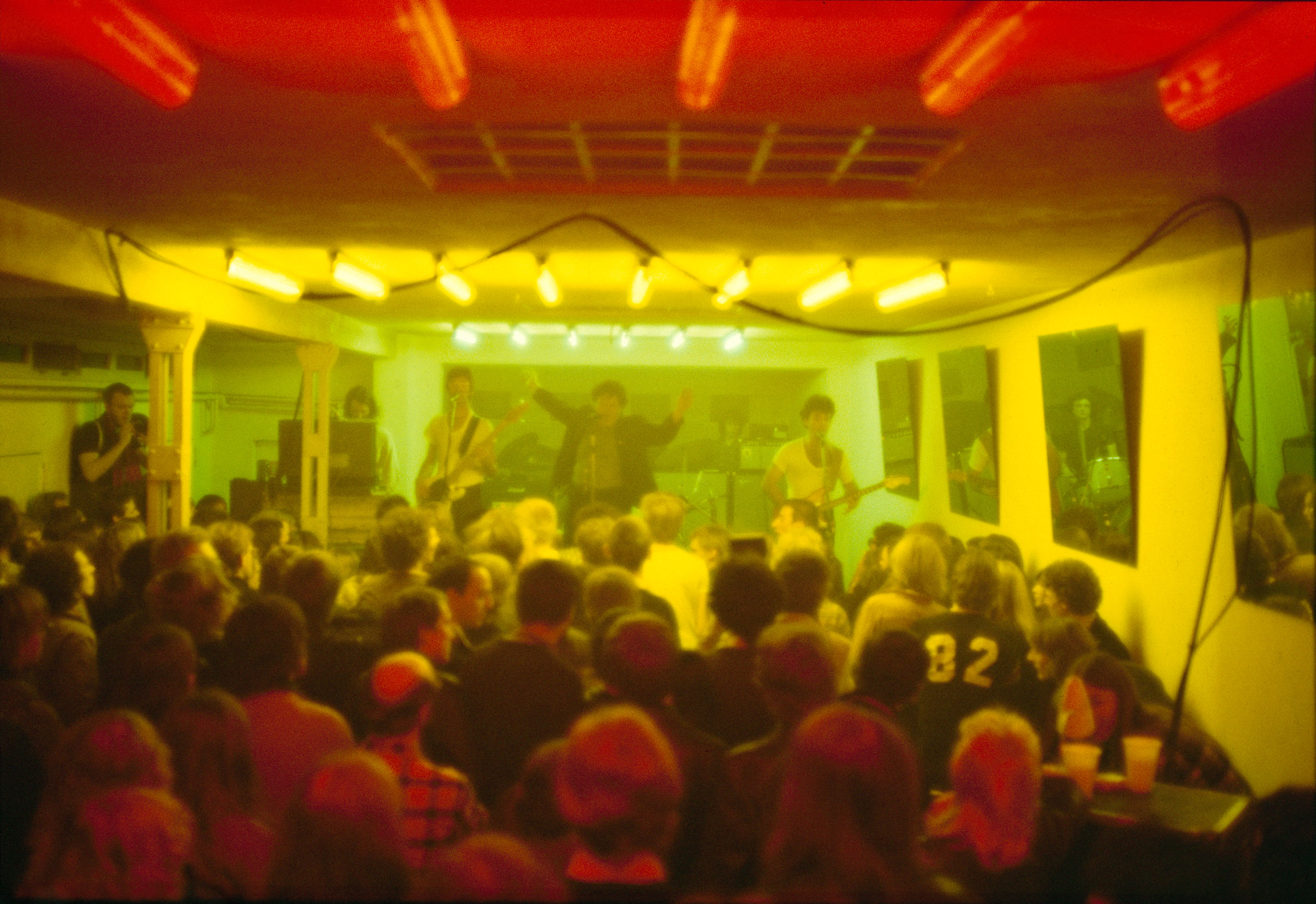Flower Power

An all-encompassing insight into the oeuvre of Marina Adams, its origins and all her work incorporates – from our recent publication 'Flower Power'
About the Author: Helga Christoffersen is the Curator of the AKG Nordic Art and Culture Initiative at the Buffalo AKG Art Museum. From 2019-2020, Christoffersen was the Executive Director of Art Hub Copenhagen and from 2013-2019, she was Assistant and Associate Curator at the New Museum in New York.
01.07.2022
The title of Marina Adams’ exhibition at von Bartha poignantly encapsulates her new work. While it evokes the power of colour, nature and the 60s youthful push for a better and more beautiful world ahead – an invigorating force that is vividly present in the show – it also speaks to a deep-rooted consideration for the ability of painting to carve out space for reflection and change. Over the past half century, Adams has developed a singular vision – creating a monumental body of work that tackles the difficult task of addressing the viewer with immense clarity and assertiveness and yet remaining open, vulnerable, and consciously committed to joy and happiness. If anything, Adams’ work is powerful, and very precisely defining what that means.
In a recent conversation, Adams admits that she almost didn’t use the title for its slightly naïve read, but that it also stuck for its immediate double reading: It is positive, and it also alludes to power[1]. It takes us back to a progressive time where the seeds were planted for the feminist and environmental movements, and when a push for gay and black rights brought about fundamental change. It also frightenedly takes us into the present where these same rights are still under attack through blatant acts of power, and where a staunch refusal to change is so directly connected to the refusal to give up that same power.
Adams’ work operates with a kind of power, or soft power (to echo the title of Adams’ 2017 show at Salon 94 in New York) that surrenders us to the present moment while fully embracing the complexity of our experience. It questions what power is and highlights the political potential of the non-linguistic that is rooted in bodily experience. At a moment when it is easier to be critical and devastated, Adams is consciously putting something positive into the world that can inspire acts of courage and transformation.

Photo by Grace Roselli
The show comprises three large paintings. The starting point, Adams reveals, was the painting Morning Glory (2021). With its characteristic abstract shapes in shades of red, blue, green and yellow, it is organised in relation to a central horizontal axis. The work makes use of the same overall composition as a previous work, New Morning (2020), but here shifts the colour and line: a way of working that is characteristic of Adams’ process. New Morning (see below) was included in a memorable 2020 show titled (Nothing but) Flowers at Karma Gallery in New York, and I remember seeing the abstract work, one of the largest in the show, surrounded by a dense hang of works depicting flowers and fauna. I recall thinking how ably it absorbed its surroundings, while speaking so accurately about our experience of nature and the sensation of being with flowers.
Adams always titles her works after they are done, which speaks to the clarity of the work in and of itself. They do not need language to come about. Her titles, often found through an intense engagement with literature, poetry, music, and the past and present history of art, take on the role of directing or completing an intention that might have been lingering, or guide how the works come together when leaving the studio.
In this case Morning Glory, carrying the title of a flower, became the starting point for an exhibition that would open in the summertime in Copenhagen, at a moment where the power of nature is amply reminding us of what we fundamentally need to be paying attention to. Soon to follow were the other two paintings in this exhibition, Azalea (2021) and Honeysuckle Rose (2021), which are titles taken from songs written and sung by Louis Armstrong and Fats Waller respectively.
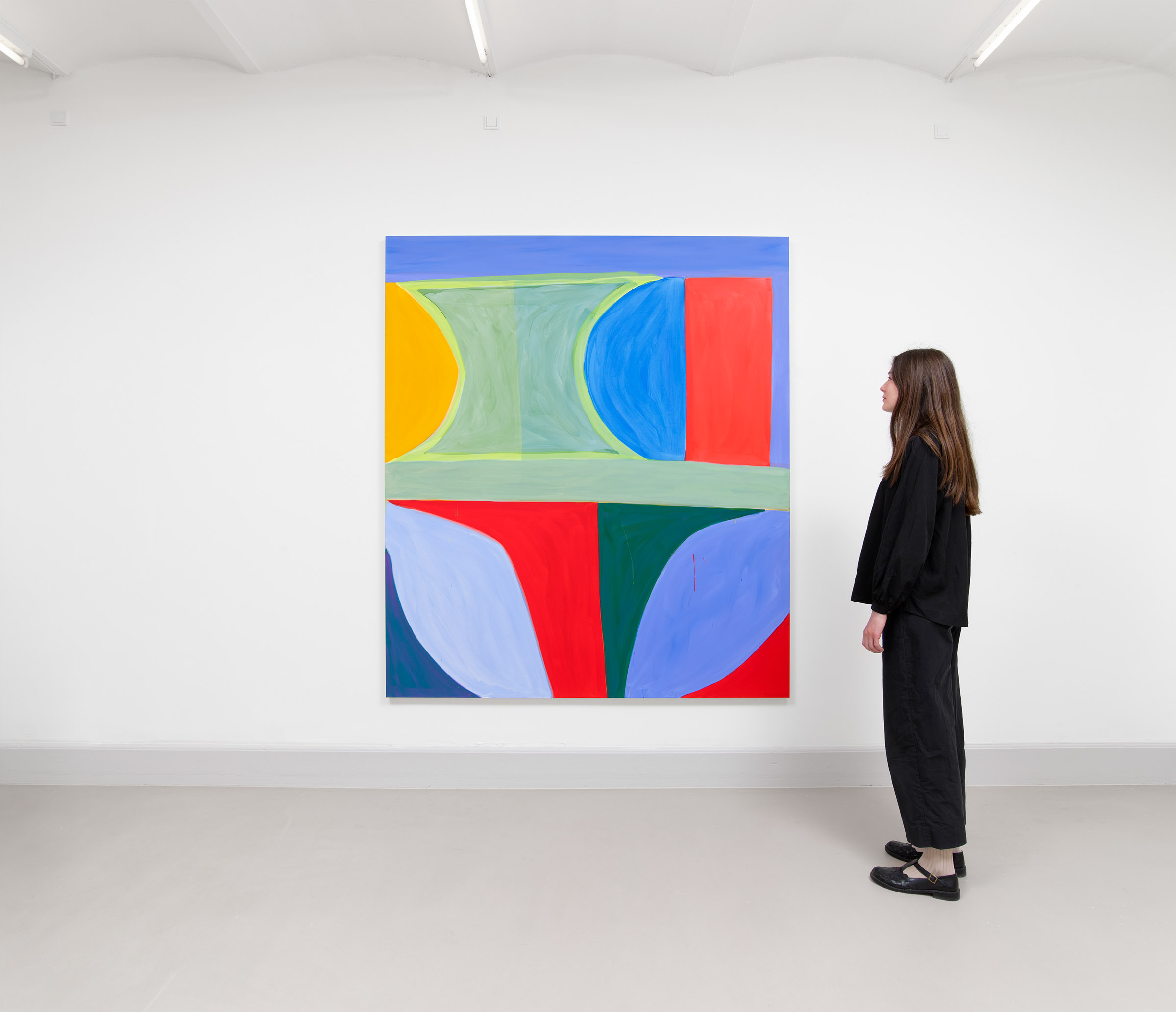
Morning Glory, 2021
Acrylic on Linen
198 x 173 cm

The paintings are shown alongside a series of gouaches that are, as Adams often chooses with her paperwork, titled according to their size, in this case 16×12 inches. Adams’ ongoing practice of working on paper is integral to her process of painting. She talks about them as part of her warm-up, as a necessary place to play, experiment and open up new possibilities. The works are very direct and honest – a quality that Adams also preserves in her paintings, where she doesn’t hide the traces when she has changed her mind. Often working on several at a time, they are a way of visually thinking quickly and out loud, and serve the purpose of getting things flowing, or as Adams puts it, “getting in the zone”. This is where thinking is left behind and the intelligence of the body, the eye and the hand take over.
Adams often presents a series of works on paper within the vicinity of a group of paintings because they expose her thinking and add breath, revealing the origin of an idea. For decades, Adams has spent summers in the hills outside of Parma, Italy, working almost exclusively in a small format, in gouache, starting with 12×9 inch works that only recently found a larger format. Operating as a light-luggage accumulation of ideas, her works on paper are brought back to the New York studio after each summer to feed new paintings.
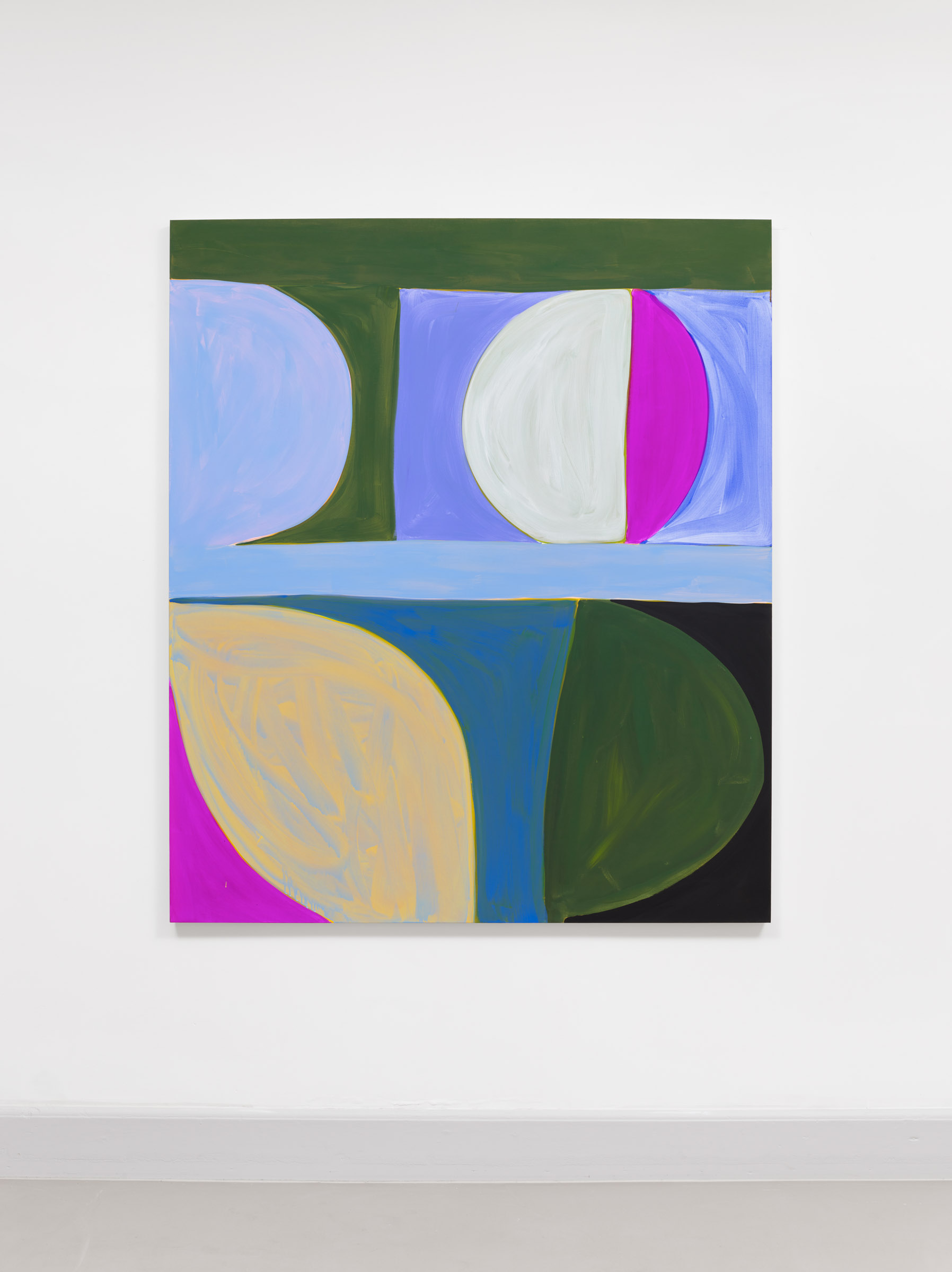
Azalea, 2021
Acrylic on Linen
172.7 x 147.3 cm
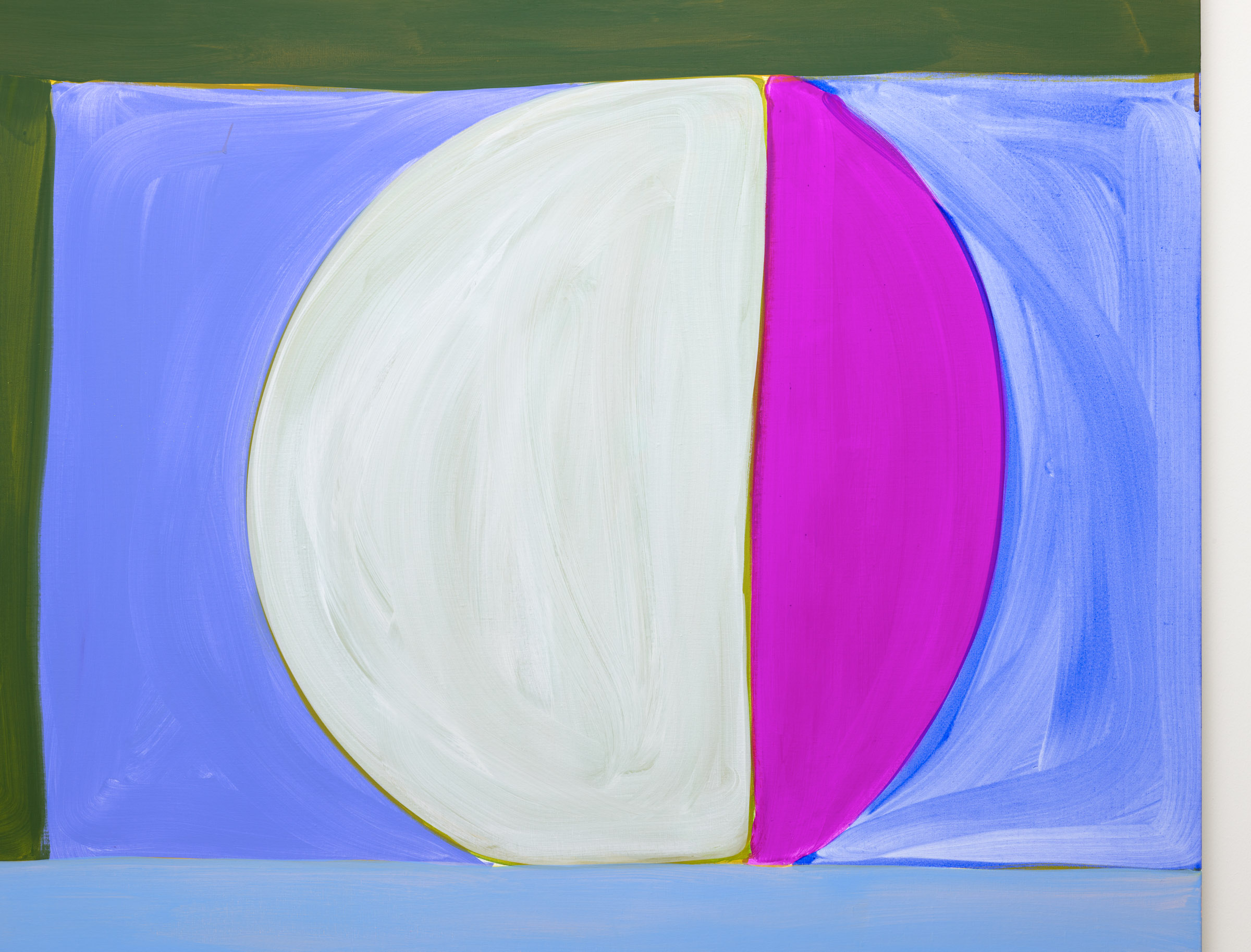
Adams’ early work reveals an exploration of figuration, and a strong interest in pattern and colour to structure the space in the work. As a young student and artist, she was painting what was immediately around her; her apartment, her plants, and books and in the case of a very early work, herself[2]. With a strong belief in her own process, she decided to let the work guide her, rather than submitting to a specific school or style – however deeply engaged with past and current attitudes, or advances within the medium.
Her early work clearly questions its own subject matter, while also drawing inspiration from other artists. For example, while exploring the ability of colour to define a space, Adams, influenced by Henri Matisse, experimented with how black could be used to create both darkness and light simultaneously, allowing this contradiction to be made visible. Similarly, Adams made use of pattern to flatten objects and play with perspective and space.
Throughout the 80s, Adams moved closer towards the ideas that define the core of her practice today. She had a period of removing colour, and focused solely on the drawing structure and how it defined the space and balance in the work. Searching for what would come next, as visible in a number of abstract paintings from the mid-80s, she gradually gave up work that was directly referential, focusing instead on dividing up the canvas formally, putting down marks, responding to or covering them up, using grid and pattern to reach a sense of balance, or in her own words to try to “break up the space and make it feel real and whole, as something that had a visual and a visceral excitement.” That said, it would be wrong to characterise Adams’ development as a linear progression that slowly removed figuration. She has herself described her trajectory as more of a spiral than a straight line.
Adams refers to a visit in 1989 to the Alhambra in Granada, Spain, as an epiphany that altered her trajectory. Having spent years thinking about subject matter and abstraction, encountering the Moorish mosaic patterns in the tilework at the Alhambra led to a profound understanding of the potential of abstract space. It does not situate you in a literal space, give any concrete direction, or information, and hence does not impose a narrative. Instead, it allows you to unlock something inside yourself. With the realisation that abstract painting has the potential to open up people’s minds and hearts and challenge them to be bigger and more than they are, Adams returned to New York with a new understanding of her path forward. This is evident throughout the artist’s work in the 90s, where new ideas guide the use of repetition, rhythm, pattern and separation of colour. This pertains to colour specifically, each holding its own space to make work that she herself has described as “visual music.”
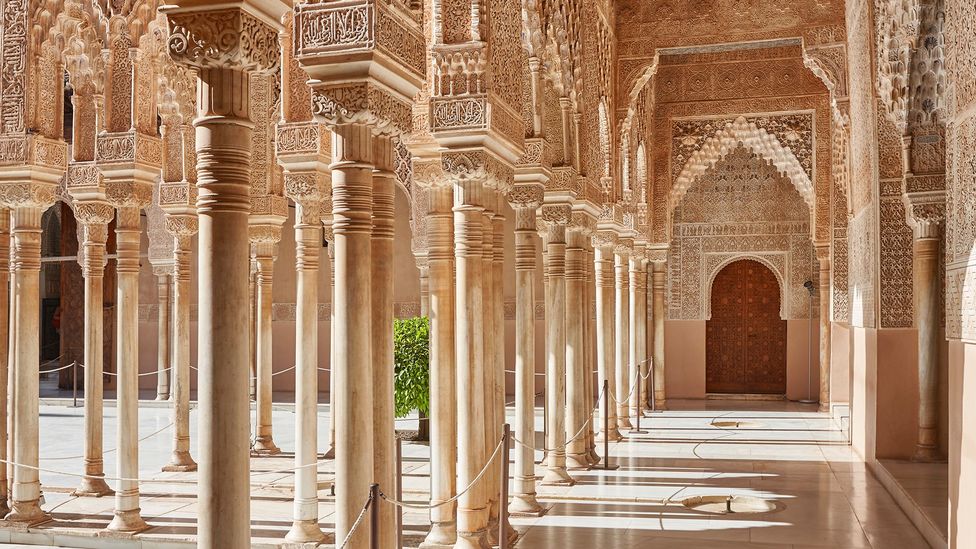
While Adams is very clear that narrative in a figurative sense was not a path she wanted to take, her oeuvre is characterised by recurring moments where figuration is revisited as an invigorating force. One of those moments was marked by a return to Rome in 1992, at a time when Adams felt a need to put breath back into her work and revisit her love of trees and plants. This visit resulted in work that depicts trees and oversized leaves organised in familiar grid-like structures. She also revisited a focus on the line and getting power into the line using simple but dynamic colours. One work with a dominant dark line on a light background depicts the top of a Roman column, but as Adams has pointed out, also doubles as a fetus when put on its side[3]. She was pregnant at the time, which was also when she started to work in acrylic – abandoning oil paint altogether.
Another such moment can be traced in the series of works titled Erotics, which Adams started working on in 2004. The artist decided to tackle several taboos head on, on the one hand talking about sexuality and pornography, and on the other working with appropriation, which is something that she had been against up until that point. Adams depicted naked bodies and intimate scenes covered partly in collaged fabric. The works play with pattern and movement, and examine how we see, what we see first, and how that can be manipulated. Interestingly, these led to paintings where Adams started using camouflage to cover up a drawing, turning a partly visible limb into just a line. In others, feet, hands, and limbs, covered by fields of colour, dissolve into lines reminiscent of leaves on a tree[4].
In her 2008 show at the CUE Art Foundation in New York, curated by the poet Norma Cole, these ideas further evolved into paintings that cropped and blew up the line drawing evident in the Erotics, continuing to cover them with camouflage in bright colors[5]. In these works, the outlines of bodies, which are hard to identify as such, gives them structure, and builds on Adams’ ongoing focus on pattern and how a line can create space and movement. Similar to Adams’ return to depictions of trees and plants mentioned earlier, this example highlights how figuration was used to shift the work in ways that clearly embodies decades of accumulated knowledge, and at the same time boldly looks ahead by interrogating and reinventing its own nature. In 2009, figuration is still present but dissolving, with structure, line, colour and light slowly taking over as the dominating elements. When you look at two works from this period that are reinterpretations of the same overall composition, it’s evident that one work still contains the line that references the original drawing of bodies, whereas the next omits the line entirely – as Adams has explained, to see if the remaining abstract structure of colour fields moving across the canvas could hold its own[6].
As this development poignantly exemplifies, the clarity within abstraction that Adams’ work so powerfully embodies has not come about through the rejection of figuration. On the contrary, it could be argued that the work is a result of decades of digesting some of the most fundamental figurative elements of human visual culture. Hence, a look back at Adams’ early work offers an expanded reading of her current output and explains why it is so viscerally charged in ways that speak to the core of our being: on an energetic level there is no separation between pure, vibrating colour and the sensual movement of a body making love or a tree blowing in the wind.
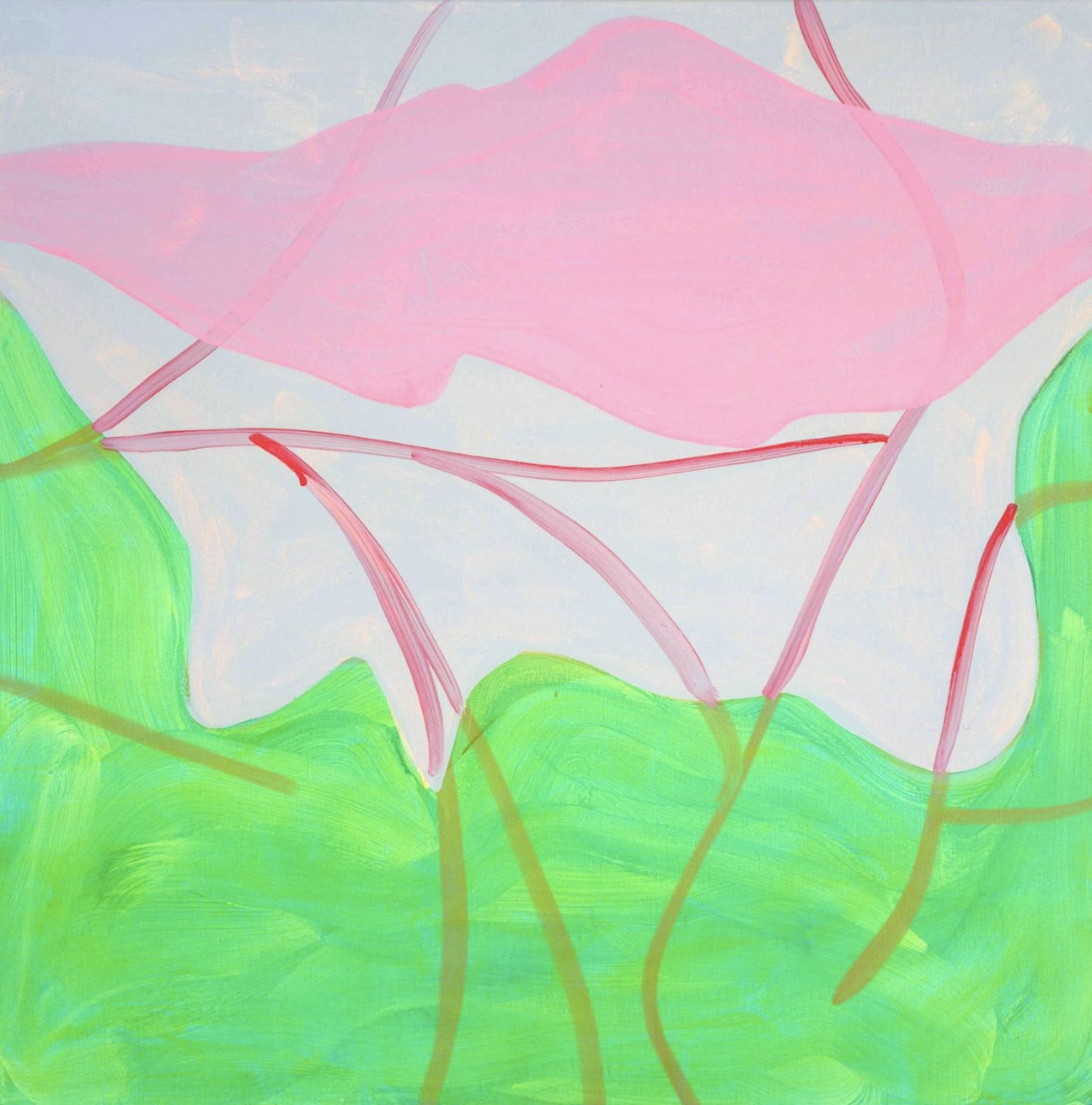
When looking at Adams’ work today, one encounters an intellectually driven practice, that first and foremost continues to advance the depth of its inquiry through bold self-interrogation. That said, an entirely new text could be written about influences from Adams’ ongoing travels and investment in literature, past collaborations with poets such as Norma Cole, Christian Prigent, Charles Bernstein and Leslie Scalapino, and deep engagement with the legacies of artists such as Henri Matisse, Willem de Kooning, Edvard Munch, Pablo Picasso, Alma Thomas, Agnes Martin and Hilma af Klint, among others. In fact, spending time with Adams’ work reveals its enormous embrace of everything that it is moving through.
Adams refers to seeing a show by Ellsworth Kelly at the French Academy at the Villa Medici, Rome in 2010 as an influential experience that left her questioning how she could let more space into her work. Adams’ work from this time reveals a new way of handling scale and surface, whilst questioning what an edge is, and how different elements meet each other on the canvas. These are central characteristics that also apply to her more recent work[7]. Although Adams has, in many respects, paired down her formal language and arrived at a powerfully clear and vibrant expression, her work also commands silence, enabling us to think and dream and create space in which we can rest and recharge, in stark contradiction to a world where technology is increasingly commanding our flickering attention.
Adams’ trajectory, up to the show that arrives in Copenhagen in the summer of 2022, makes visible a pursuit that has consistently worked away at the boundaries of the works’ ability to contain the fullness of human experience. Her work has the profound capacity to grab you energetically and evolve the more time you spend with it. Although the work has an immediate impact at first encounter, engaging with it over time reveals the many layers it contains and the accumulation of knowledge that has gone into its making. Flower Power takes us on a journey where the magnitude of life that Adams has poured into her work shows us how everything we do either opens something up or closes something down and, in that sense, teaches us about our way of living.
It is not surprising that a recent view of Adams’ large studio wall, full of reference and inspiration imagery, features a cut-out of a small Buddhist tantra painting. The nod to eastern philosophy or the practice of yoga, of which Adams is a long-time follower, not to mention her devotion to swimming or obsession with tennis, are all practices that bring you into a flow, drawing the practitioner away from a focus on any specific outcome and leave you present in the current moment, while activating the intellect that we have in our bodies and our muscles rather than our mind. As Adams states, these are practices in which you give up the end game, and commit fully to the power of the moment, just as she has so profoundly done in her practice as an artist.
Adams’ trajectory complicates one-sided readings of her abstract language and highlights the boundless knowledge embedded within each work. While having reached a vibrant clarity of colour and playful ease of line, the power of her work today also lies in its ability to contain the multitude of its accumulated origins. We are encountering a space that is open to our experience but as soon as we start to question what we see, the work gives us 1000 different answers that collectively dissolve the distinction between the figurative and non-figurative and the verbal and non-verbal. That might also be why Adams doesn’t comfortably commit to the label of abstract painting. Her work is much more than that. Instead of rejecting figuration, it in fact swallows it whole, rather than separating out any one possible approach to what painting can be, it consciously embraces them all. As a way of life and pursuit within art, this is the hardest thing to do. And seeing it unfold is powerful.

[1] This text is developed from a conversation with Marina Adams at the end May 2022 and also contains quotes and perspectives shared by the artist in a recent public talk given in connection with the show “FOCUS: Marina Adams” on view from November 6, 2020 – January 10, 2021 at the Modern Art Museum of Fort Worth in Texas.
[2] Self Portrait, 1977
[3] Rome 8, 1994
[4] Exemplified in works such as Love in the Time of, 2004 and How Pink turns to Yellow, 2005
[5] Exemplified in Early Dawning, 2007
[6] My Dream at Dawn, 2009 and Native Life, 2009
[7] Exemplified in The Kiss, 2010
